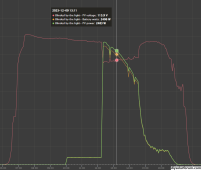Checkthisout
Solar Wizard
- Joined
- Nov 14, 2021
- Messages
- 4,819
No. Neither do their inverters.
I know my MP does not.
Kind of weird when my EPever mppt does.
However maybe Victron thinks people worry about it too much and giving users the readout would generate unnecessary concern. Electronics operate at higher temps than people think. Most are in larger cases so the user isn't as close to the heat-producing components and heat sink as they are with an MPPT.
I'm reminded of how many people are concerned about fluid temps in their vehicles based on old wives tales of what acceptable fluid temps are. This drives manufacturers to just install idiot lights and gauges that show range rather than actual temps.



